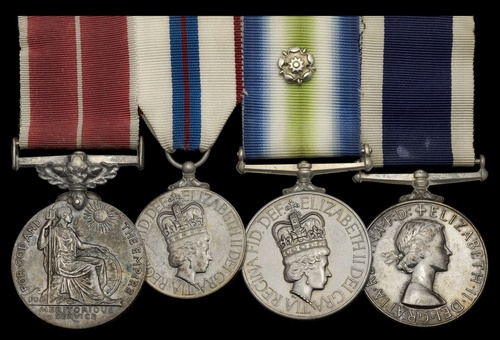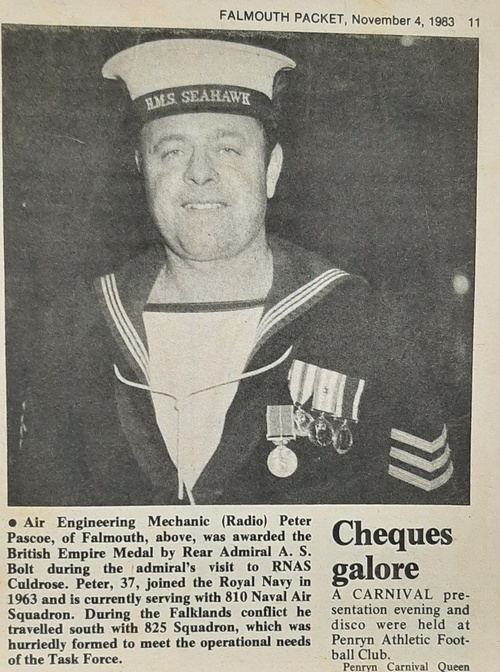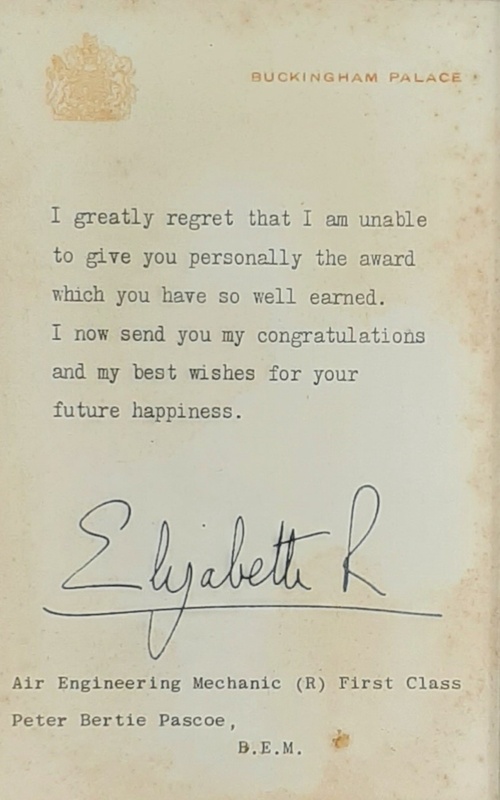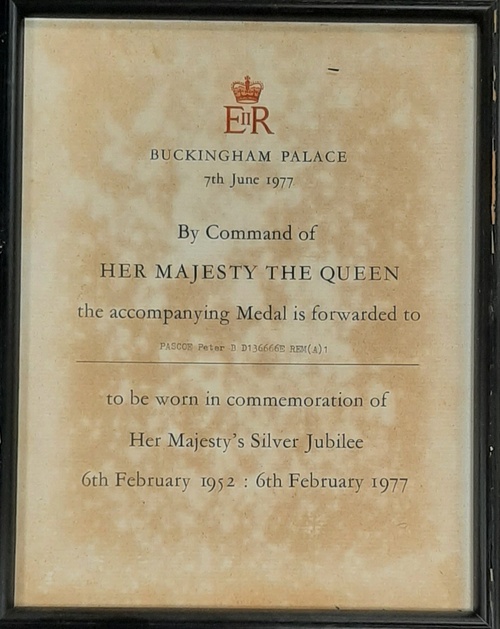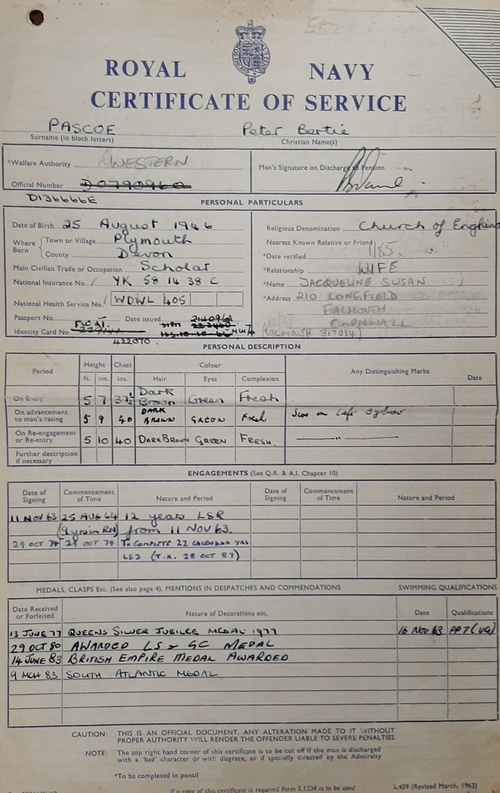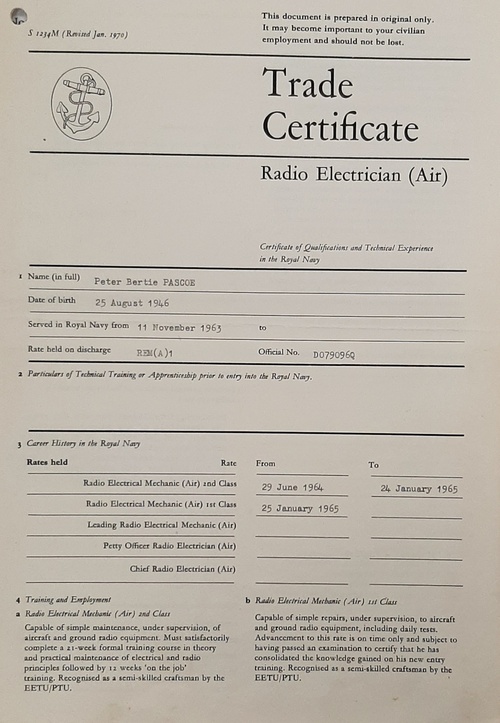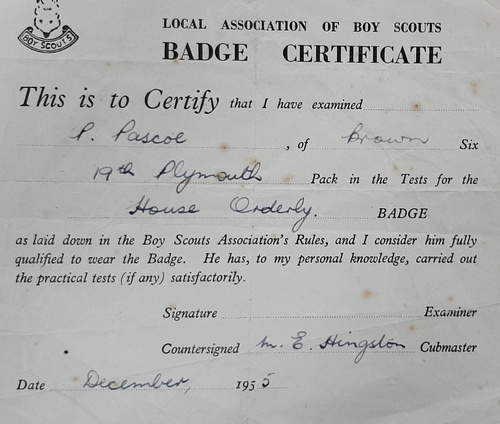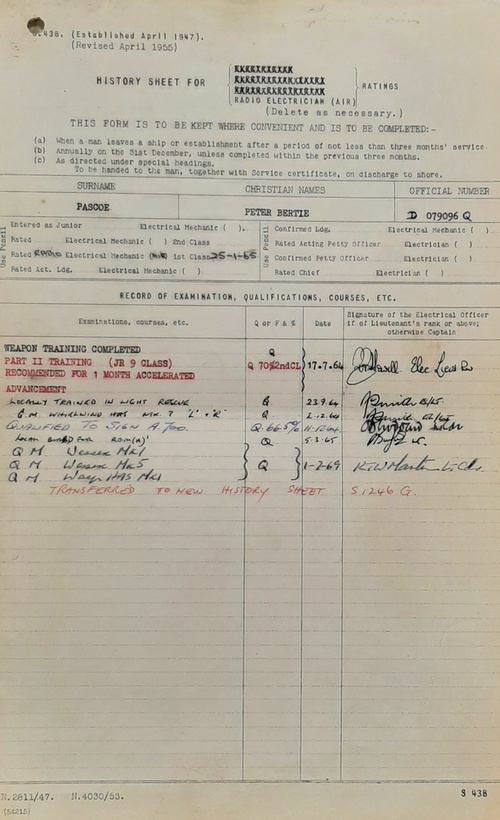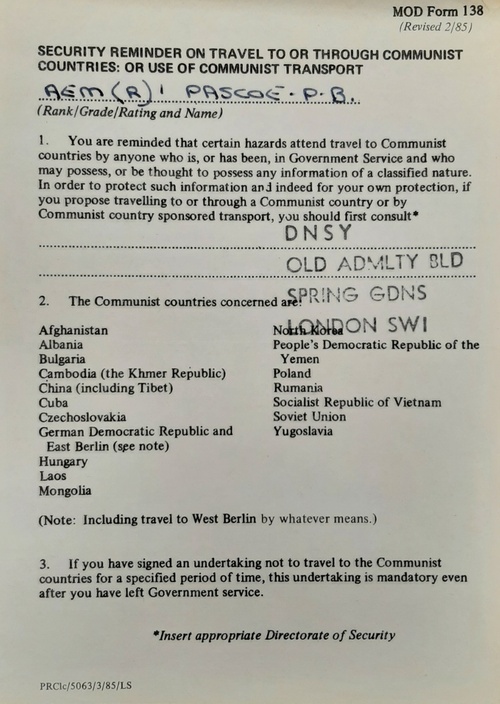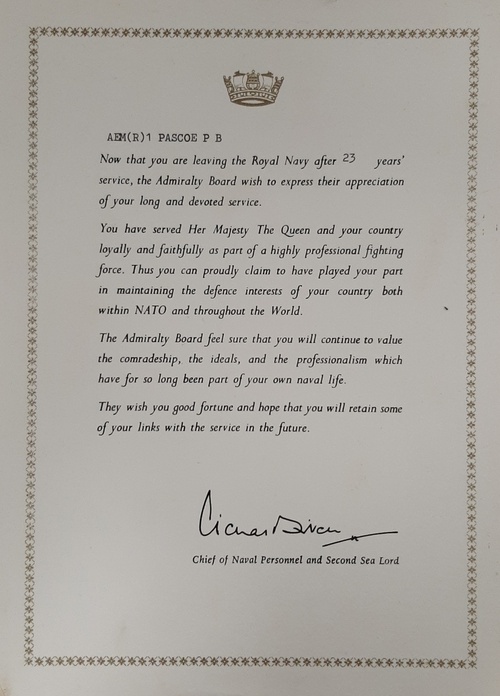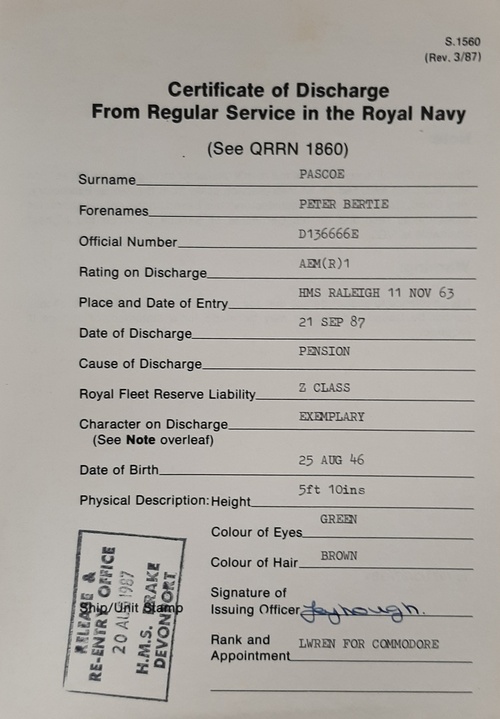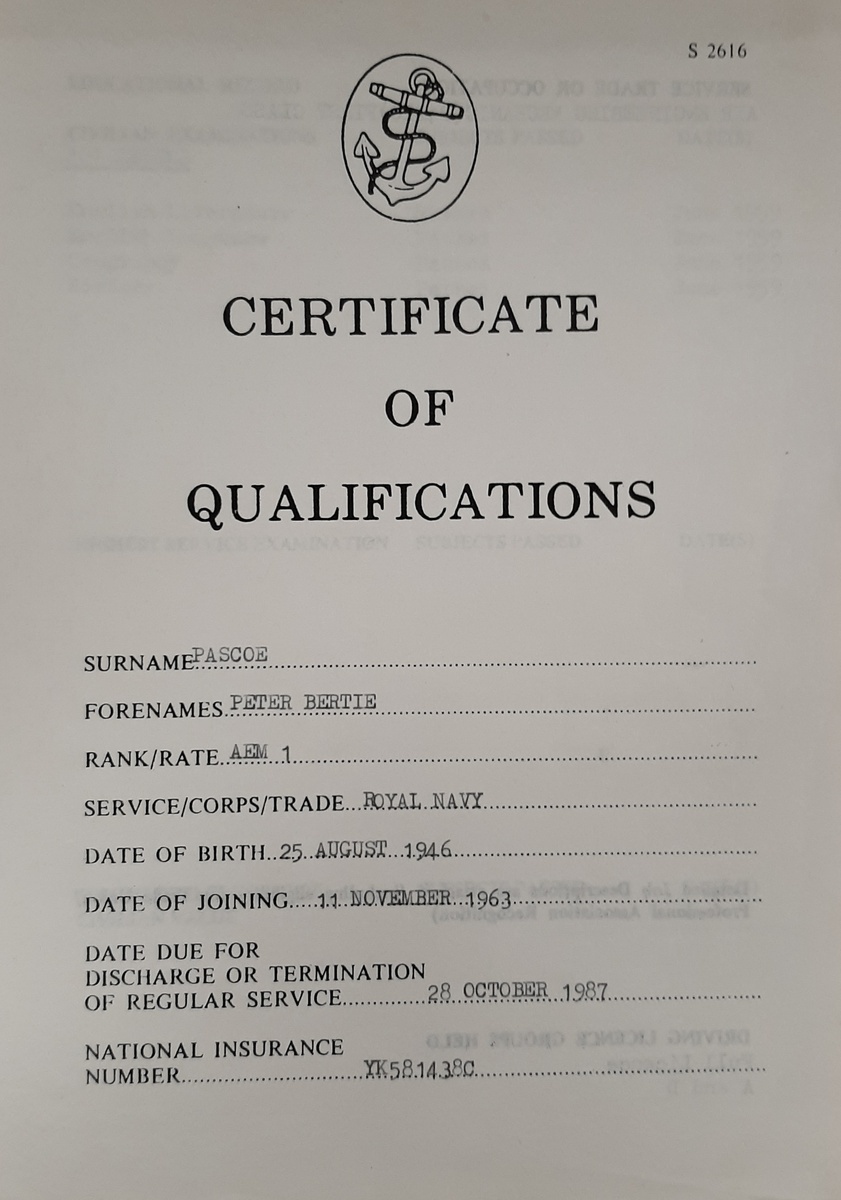Auction: 24003 - Orders, Decorations and Medals
Lot: 149
A well-documented H.M.S. Seahawk 1983 B.E.M. group of four awarded to Air Engineering Mechanic P. B. Pascoe, Fleet Air Arm, Royal Navy
British Empire Medal, E.II.R. (A.E.M. (R) 1 Peter B. Pascoe, D136666E.), officially impressed naming upon a pre-prepared ground; Jubilee 1977; South Atlantic 1982, with rosette (AEM(R)1 P B Pascoe D136666E 825 Sqdn); Royal Navy L.S. & G.C., E.II.R., (AEM1 P B Pascoe D136666E HMS Seahawk), mounted as worn, sold together with a large archive of original material, slight edge bruise to last overall good very fine (4)
B.E.M. London Gazette 11 June 1983.
Peter Bertie Pascoe was born at Plymouth, Devon on 25 August 1946 and entered the Fleet Air Arm as Engineering Mechanic Class II Raleigh 11 November 1963. He served ashore at a variety of shore bases, gradually adding to his technical skills as well as being trained in night rescues on 23 September 1964.
Promoted Engineering Mechanic Class I at Centaur on 25 January 1965 Pascoe continued to serve in Britian for over a decade. Posted to H.M.S. Terror, the Royal Naval base at Singapore between 4 April 1969-25 June 1971. He was stationed with No. 814 Squadron flying Sea King Helicopters on 5 July 1976, remaining with them until 4 September 1978.
Stationed with H.M.S. Seahawk on 29 October 1980 Pascoe was awarded his L.S. & G.C. while there. He was posted to No. 825 Squadron on 4 May 1882 equipped with the Sea King HA.2 and was still with this unit upon the outbreak of the Falklands war.
The formation sailed with the second wave, landing at San Carlos on 1 June 1882 where they were soon employed on troop transfers as well as collecting Prisoners of War in support of the 5th Infantry Brigade. The Squadron was able to claim that they were the first unit to catch sight of the Two Sisters Mountain while lifting batteries during the advance, although they did come under fire in the process.
It was No. 825 Squadron that reacted in the wake of the Bluff Cover Air Attacks on 8 June. An air attack by Douglas Skyhawks at 14:00 saw first the RFA Sir Galahand and then Sir Tristram hit by 500-lb bombs. Both vessels were burning, the former sinking, and a number of soldiers and sailors were stranded upon the ships, unable to escape due to the flames.
The Squadron's Sea Kings flew over the burning vessels and used their winches to evacuate as many as possible. They managed to rescue a good number but the losses of 48 men killed upon on Sir Galahand and
Two upon Sir Tristram were still the highest number killed in action since the days of the Second World War.
The unit was present until the end of the war on 14 June, achieving 1,700 hours of flying time in just two weeks. The end of the conflict did not see their role ended as they were a major part of the repatriation efforts after the fighting.
Pascoe remained with the Squadron until 19 September 1882, being posted on to No. 810 Squadron where he was awarded his B.E.M. by Rear Admiral A. S. Bolt. His Trade Certificate notes:
'An alert, intelligent man who can grasp the essentials of any normal situation and has good judgement. He can organise normal and routine matters satisfactorily and is a good team worker. He is pleasant in his dealings with other people and is generally cheerful and energetic in work that interests him.'
He was released from Drake on 21 September 1987, it is noted that since 1980 Pascoe's conduct had been listed as exemplary.
Sold together with copied research and an archive of original material comprising:
i)
Framed congratulatory certificate from the monarch.
ii)
Framed forwarding certificate for the Silver Jubilee Medal.
iii)
Original service records.
iv)
several newspaper clippings.
v)
Character assessment forms and recommendations for exemplary conduct.
vi)
Trade certificate.
vii)
Rating History forms and Division Officer's Record Sheet.
viii)
Copy of the London Gazette for 10-11 June 1983.
ix)
Assorted documentation related to the recipient's trade and character.
x)
Loyal Association of Boy scouts Badge Certificate and application for a British Empire Brooch.
Subject to 20% VAT on Buyer’s Premium. For more information please view Terms and Conditions for Buyers.
Sold for
£1,500
Starting price
£550

